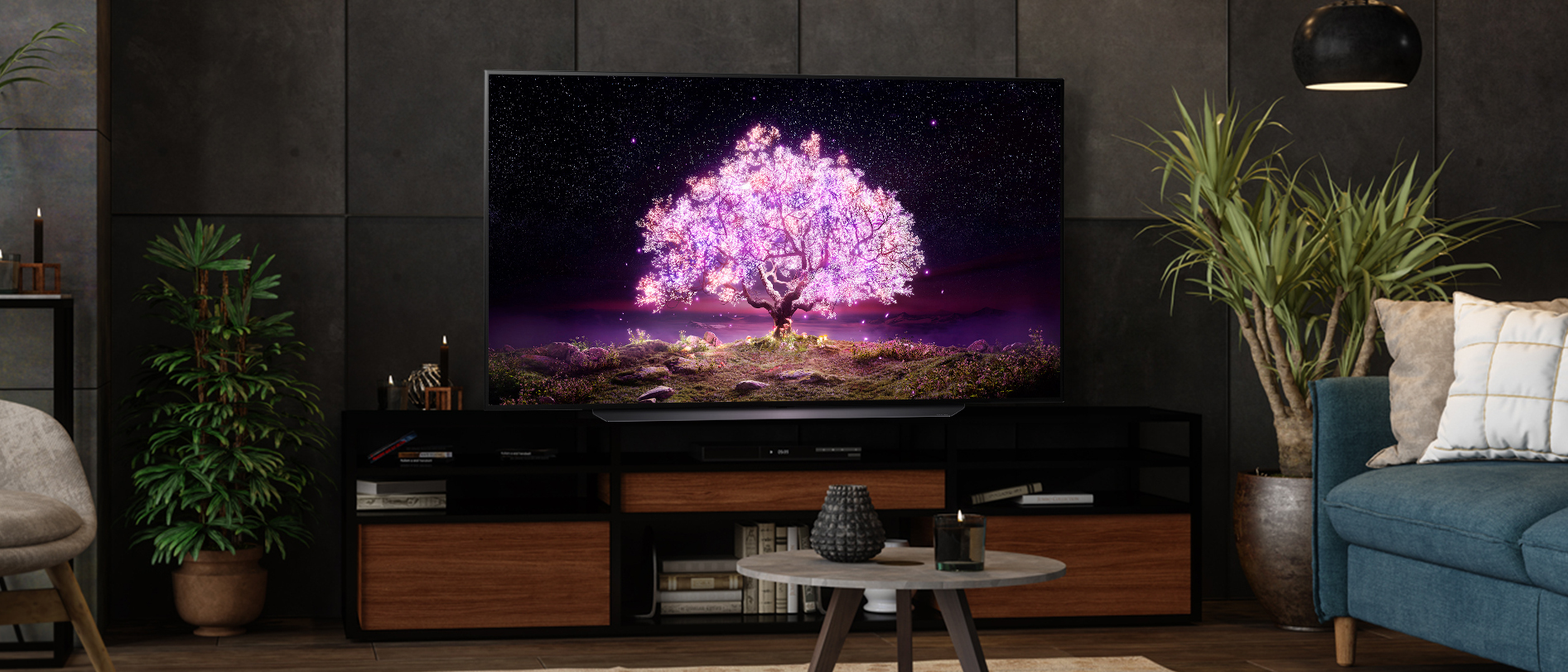TechRadar Verdict
Although there's a newer model available, the LG C1 OLED remains one of the best TVs at any price. It’s missing the new OLED evo panels going into the G1 OLED, but even in their absence the C1 produces colorful, bright and rich pictures with support for most types of HDR. There might be one or two areas for improvement, but otherwise the LG C1 OLED remains a great option.
Pros
- +
Beautiful 4K/HDR picture
- +
Four HDMI 2.1 ports
- +
WebOS is fantastic
Cons
- -
Reflective glass surface
- -
Reddish hues in faces
- -
No HDR10+
Why you can trust TechRadar
Two-minute review
The LG C1 remains one of our favorite TVs in the world even a year after its release. There's now the new LG C2 OLED , a model that took the TV of the Year award in our TechRadar Choice Awards 2022 – but that doesn't mean the C1 OLED is destined for the dump. After some price cuts, it's one of the best-value TVs on the planet.
That’s because, as it stands, the LG C1 OLED is still a perfectly viable option for a new OLED TV. It uses LG’s Alpha a9 Gen. 4 processor for great upscaling and virtual surround sound audio, and with four separate HDMI 2.1 ports, it’s ready for the PS5, Xbox Series X, Xbox Series S, and whatever next-gen consoles can throw at it. Gamers will also appreciate the new Game Optimiser menu that gives you the option to quickly adjust brightness, contrast and VRR on the fly.
As with this year's model, you’ll find support for both Google Assistant and Amazon’s Alexa, who can be summoned using buttons on your remote, and a near-complete repository of streaming services that includes Netflix, Hulu, Disney Plus, Amazon Prime Video and many more.
The LG C1 isn’t flawless, as we did encounter issues around how the new Alpha a9 Gen. 4 upscales faces, and how reflective the all-glass screen is in the daylight, but the issues are few and far between.
At sizes of 55 inches and up, you also get a higher brightness from the newer LG C2 model, so it's not like nothing has moved on from the C1. But at the prices you can find it now, it's just a fantastic buy while it lasts.
LG C1 OLED: price and release date
- Available in 48-inch to 83-inch screen sizes
- Pricing starts at $1,499 / £1,699 (around AU$2,999)
The LG C1 OLED is part of the LG 2021 TV lineup that includes the new LG A1 OLED, LG G1 OLED and LG Z1 OLED, as well as the new QNED TVs like the QNED99, QNED95, QNED90 and QNED85. The LG C1 is the cheapest OLED in the lineup that uses the new Alpha a9 Gen. 4 processor (the A1 OLED will be cheaper but uses the a7 processor), however it’s still not exactly what we’d consider cheap:
US pricing and release date
Sign up for breaking news, reviews, opinion, top tech deals, and more.
- 48-inch OLED48C1PUB retails for $1,499
- 55-inch OLED55C1PUB retails for $1,799
- 65-inch OLED65C1PUB retails for $2,499
- 77-inch OLED77C1PUB retails for $3,799
- 83-inch OLED83C1PUA retails for $5,999
UK pricing and release date
- 55-inch OLED55C14LA retails for £1,699
- 65-inch OLED65C14LA retails for £2,499
- 77-inch OLED77C14LA retails for £4,499
- 83-inch OLED83C14LA retails for £6,999
Australia pricing and release date
- 48-inch OLED83C1PTB retails for AU$2,999
- 55-inch OLED83C1PTB retails for AU$3,499
- 65-inch OLED83C1PTB retails for AU$4,699
- 77-inch OLED83C1PTB retails for AU$8,999
- 83-inch OLED83C1PTB retails for AU$12,599
If you compare those prices to last year, the LG C1 OLED costs the exact same as the LG CX OLED cost when it first came out last year, though you can now find the latter at a discount now that the LG C1 is readily available. Because there’s not a significant difference between the two other than the processor, it’s probably worth picking up last year’s model at a steep discount if you can find one.
It makes sense that last year’s TV is now cheaper, but how does the C1 OLED’s price compare to other OLED TVs? Compared to the new Sony A80J OLED that costs $2,799 for the 65-inch version, the C1 OLED is a bit cheaper for US buyers, but UK buyers will be paying £4,199 for the 65-inch Sony A80J so the £2,499 C1 OLED is a steal in comparison.
There are cheaper alternatives, however, like the Vizio OLED TV that starts at just $1,198 for a 55-inch model or the LG A2 that costs just £999 from Very. There are some drawbacks to both those TVs (starting with the lack of HDMI 2.1 ports) but they are cheaper and provide similarly deep black levels.
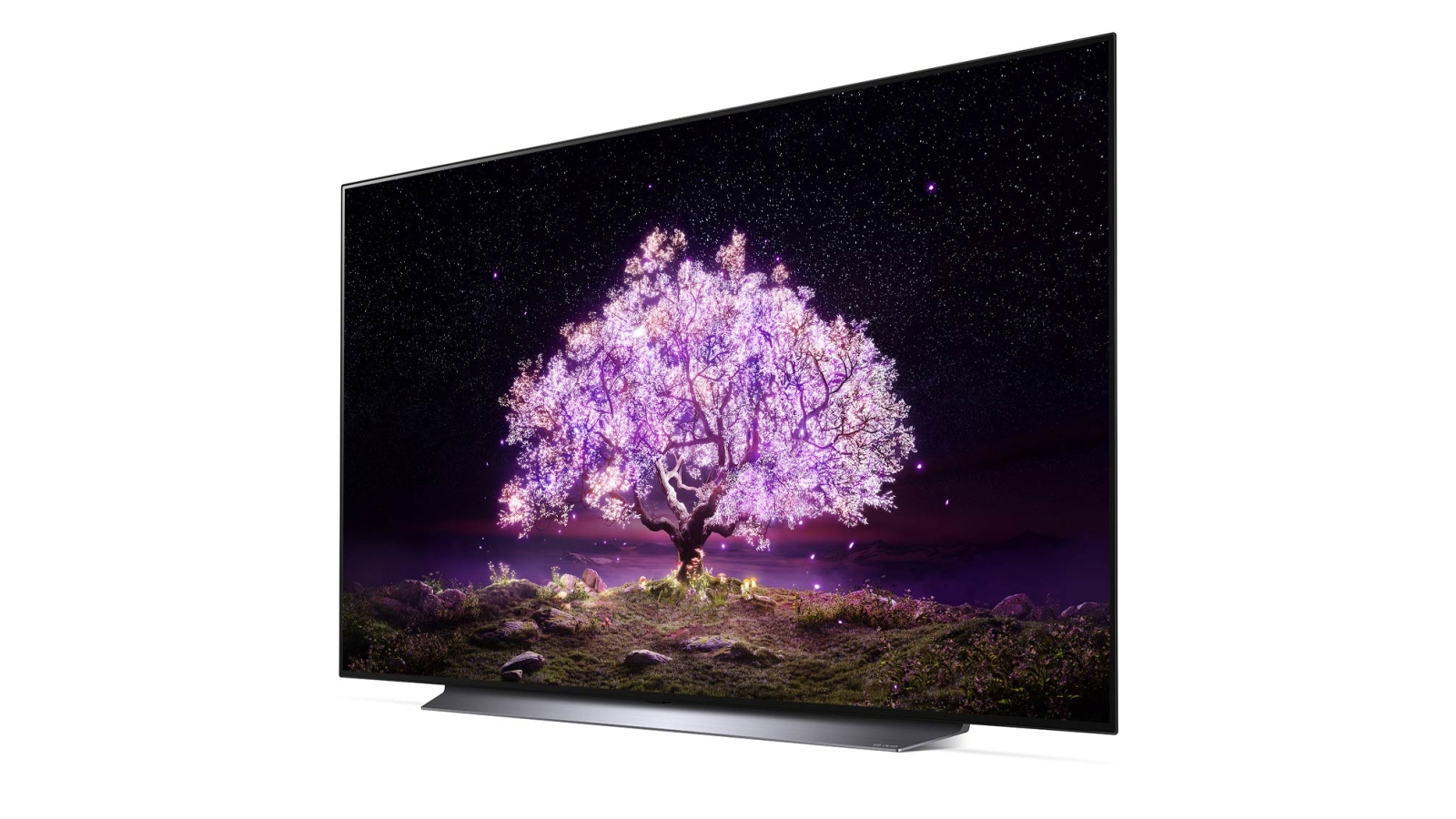
LG C1 OLED: design
- Unibody stand feels hefty and safe
- Razor-thin near the top
- Reflective glass surface
- Fantastic Magic Remote
It can feel silly to talk about how a TV looks on the outside – it’s the picture that matters most, after all – but you can’t ignore how nice the LG C1 OLED is design-wise. The front of the TV is pure minimalism – there’s a long silver stand that holds the TV upright and only a millimeter or two between the picture and the edge of the display.
If you were to mount it, pretty much all you’d see is the screen, but putting it on its (quite hefty) stand still looks great. That extra heft prevents the TV from wobbling and gives the C1 a low center of gravity.
Spin the TV around to the side and you’ll see the razor-thin OLED screen; it’s thinner than your smartphone and it looks a lot nicer, too. Toward the bottom of the TV, near where the stand screws in, the TV’s a bit thicker to house the components and the speakers, but even that section isn’t larger than most full array LED-LCD TVs.
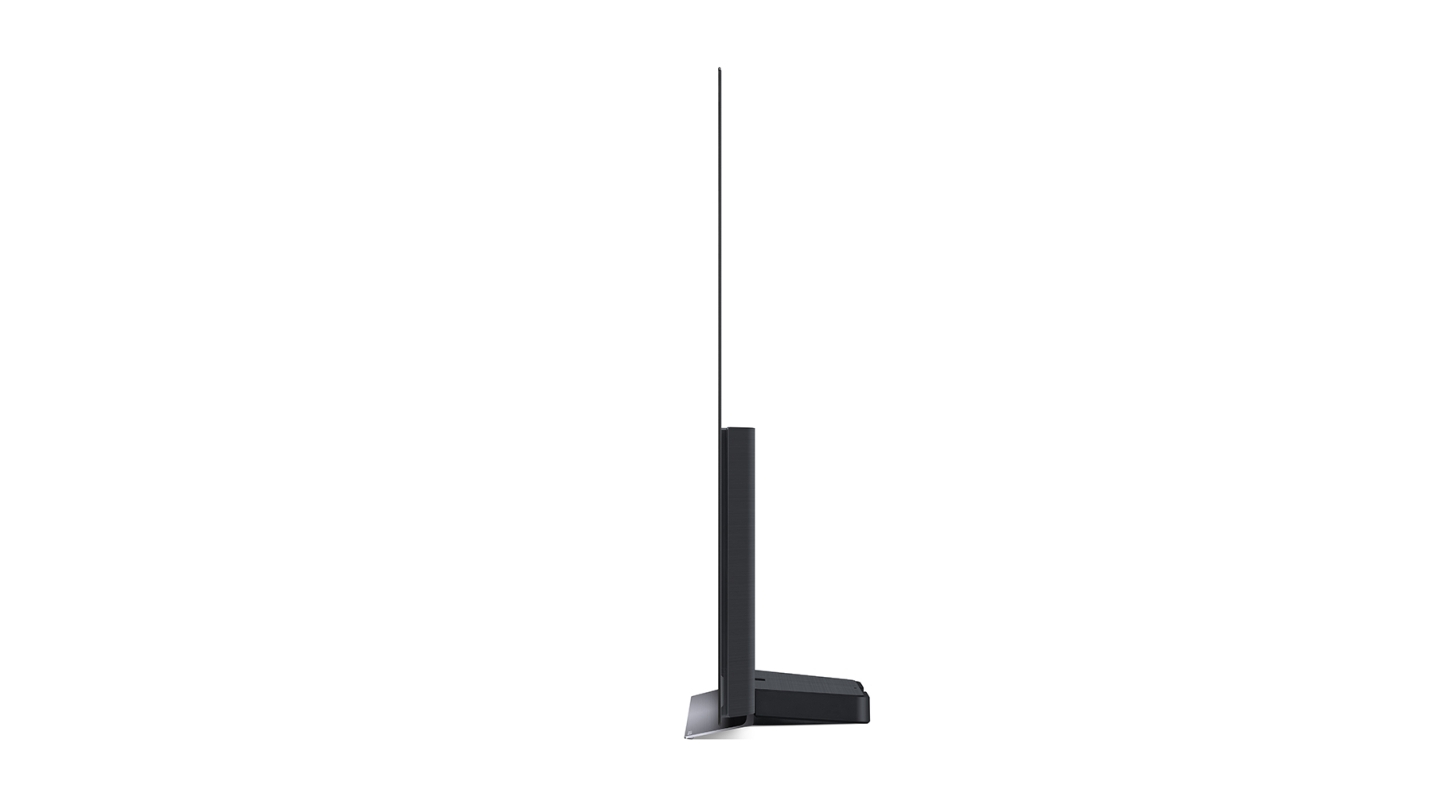
In fact, the only real problem with the C1’s design is that the front all-glass screen is fairly reflective. Put it in a moderately lit room with streams of light coming in and it’s easy to catch a glare. Sure, that glare subsides some when you’ve got bright and colorful content playing on the screen, but any night or space scene will have a glare if you can’t close the blinds.
Outside of that one sore spot, however, the rest of the design gets full marks. In terms of ports, the C1 has four full-spec HDMI 2.1 ports that support 4K at 144Hz, plus you’ve got three USBs, RF tuner, Wi-Fi, Bluetooth and optical digital audio output. Last but not least, one of the HDMI ports supports eARC/ARC, which is great for folks with an AV receiver or soundbar who don’t like to have more than one remote in use.
Speaking of remotes, the LG C1 OLED comes with the wonderful LG Magic Remote that’s Bluetooth-enabled and has a built-in microphone for voice searches. The remote feels great in the hand and runs off two AA batteries. What we love most is that the UI can either be controlled using Wii-style motion controls or the directional pad, or you can use the four quick launch buttons down at the bottom to the most popular apps.
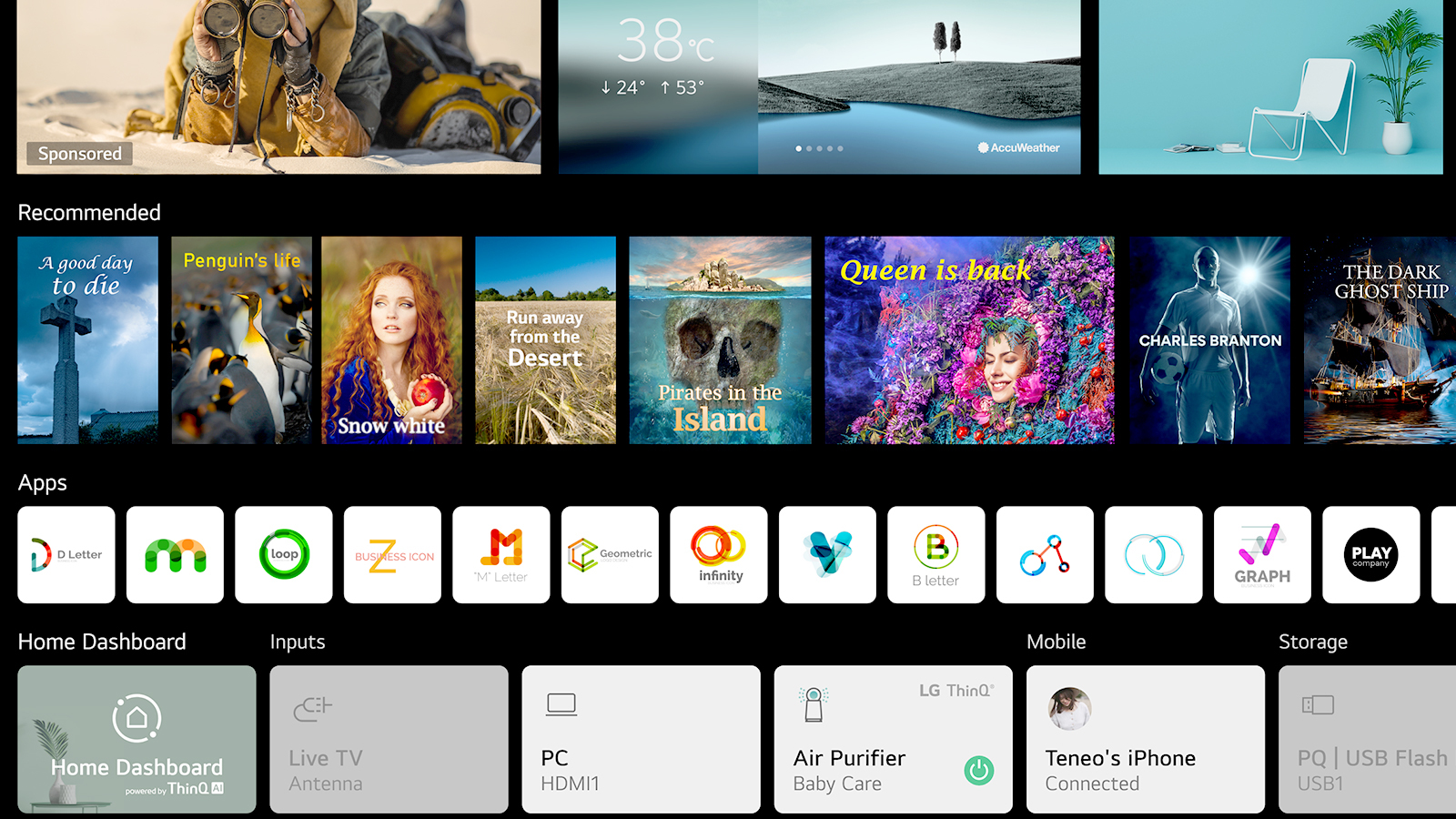
LG C1 OLED: smart TV
- Support for nearly every major streaming service
- Quick, responsive UI with AirPlay and Casting
- Amazon Alexa and Google Assistant built-in
If you’ve used an LG TV in pretty much the past decade, you’ll know what to expect with the C1 OLED – yep, it’s WebOS. What makes WebOS an old staple of LG TVs is its flexibility to add new channels as soon as they arise, and support of multiple partners. Put simply, because it doesn’t have any allegiances to Google, Amazon or Apple, WebOS supports all of the above simultaneously with a zippy UI and robust customization system.
The only major change this year is that there’s more of a focus on the actual ThinQ AI home screen that you’ll see every time you press the home button. Here, you’ll find your most frequently used apps as well as any devices you’ve connected to ThinQ AI.
Speaking of apps, nearly every major app is presented and accounted for, including Netflix, Amazon Prime, Hulu, Vudu, Sling TV, Disney Plus, Paramount Plus and Apple TV. For music streaming your options are slightly more limited, but you can still pick from Spotify, Plex, Pandora, Amazon Music and more. Apple Music is now available through the TV too.
- See the complete list of WebOS apps on LG's website
While WebOS hasn’t added many new features this year outside of the new homescreen with more rows, there are still some nice additions from last year worth calling attention to. Chief among them is Sports integration where, if you tell the C1 what your favorite sports teams are, WebOS will give you score updates and remind you when your teams are playing.
More useful, however, is the support for Amazon Alexa and Google Assistant built right into the TV that can be accessed by pressing the corresponding buttons on the remote, as well as support for AirPlay and Casting from your phone or tablet. We had a bit of problems getting AirPlay to work properly during our testing – but Casting worked perfectly.
LG C1 OLED: picture quality
- Doesn’t use the new LG OLED evo panel (but still looks good)
- Upscaling is amazing, with one minor exception
- Supports HDR10, HLG and Dolby Vision, but not HDR10+
LG’s 2021 OLED TV lineup is divided into two categories this year: OLED TVs with LG’s new OLED evo panels and those without it. For those wondering, the LG C1 doesn’t have it – and yet, even without the new panel it’s still one of the best OLED TVs we’ve seen.
What the OLED evo panel adds is additional brightness through a new lighting element in the self-emissive pixels. That’s absent from the LG C1 OLED, but we found that it isn’t really lacking in brightness. In our moderately bright (i.e. some ambient light) living room, the picture looked gorgeous. Sure, the reflective glare ate into the inky black levels, but we found the brightness of the screen to compensate nicely for the ambient light.
The reason the C1 is able to do that is because the light sensor built into the TV measures levels of ambient light and calibrates the picture accordingly. If the TV sees that there’s more light in the room, it adds extra brightness to the screen. That peak brightness still isn’t as high as, say, the peak luminance on the new Samsung QN900A QLED, but it’s getting closer to the 1,000-nit mark that rival LED-LCD TVs shoot for.
Speaking of brightness and contrast, the C1 OLED supports most major flavors of HDR – including HDR10, Dolby Vision and HLG – with the minor exception being HDR10+. That last bit means you won’t see shows from Amazon Prime live up to their full potential, but services like Netflix, Vudu and Disney will all have Dolby Vision content enabled.
Watching the opening of Falcon and The Winter Soldier, the crimson reds of Captain America’s shield and the deep blues of the sky looked outstanding. And while no part of the show blinded us with bright HDR highlights – again the LG C1 OLED doesn’t use the new OLED evo panels like the LG G1 OLED – any dark scene looked significantly richer on the C1 OLED than on any LED-LCD we tried in the last 12 months.
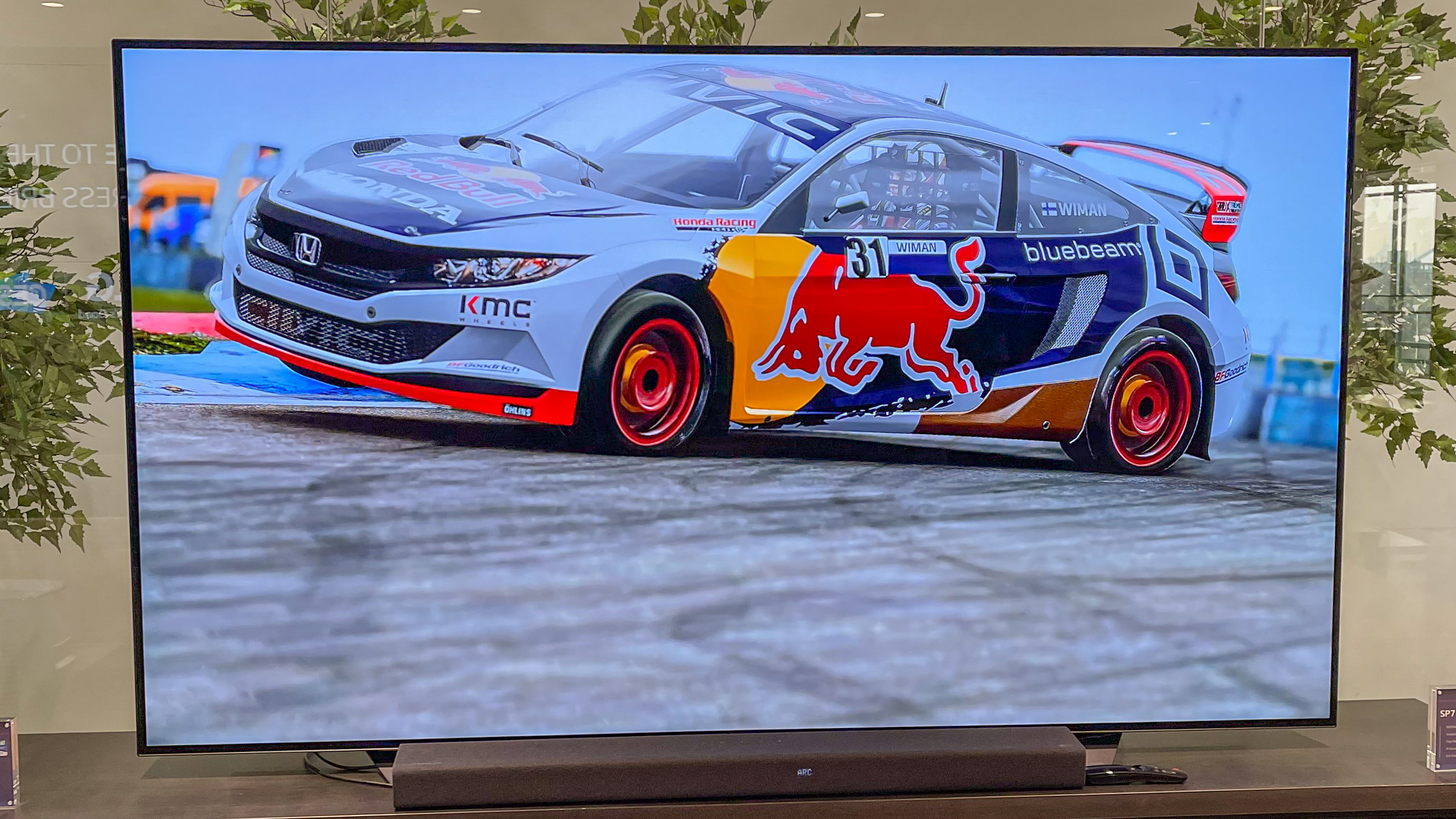
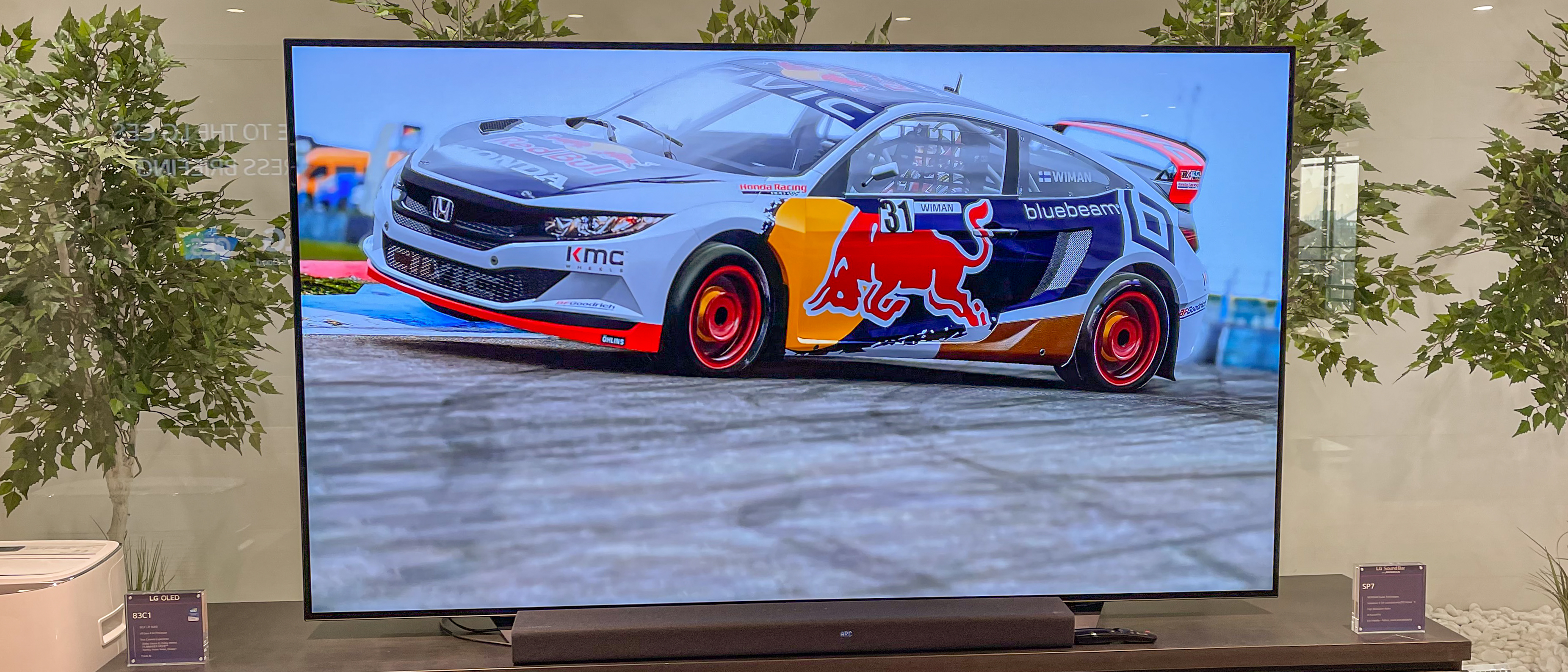
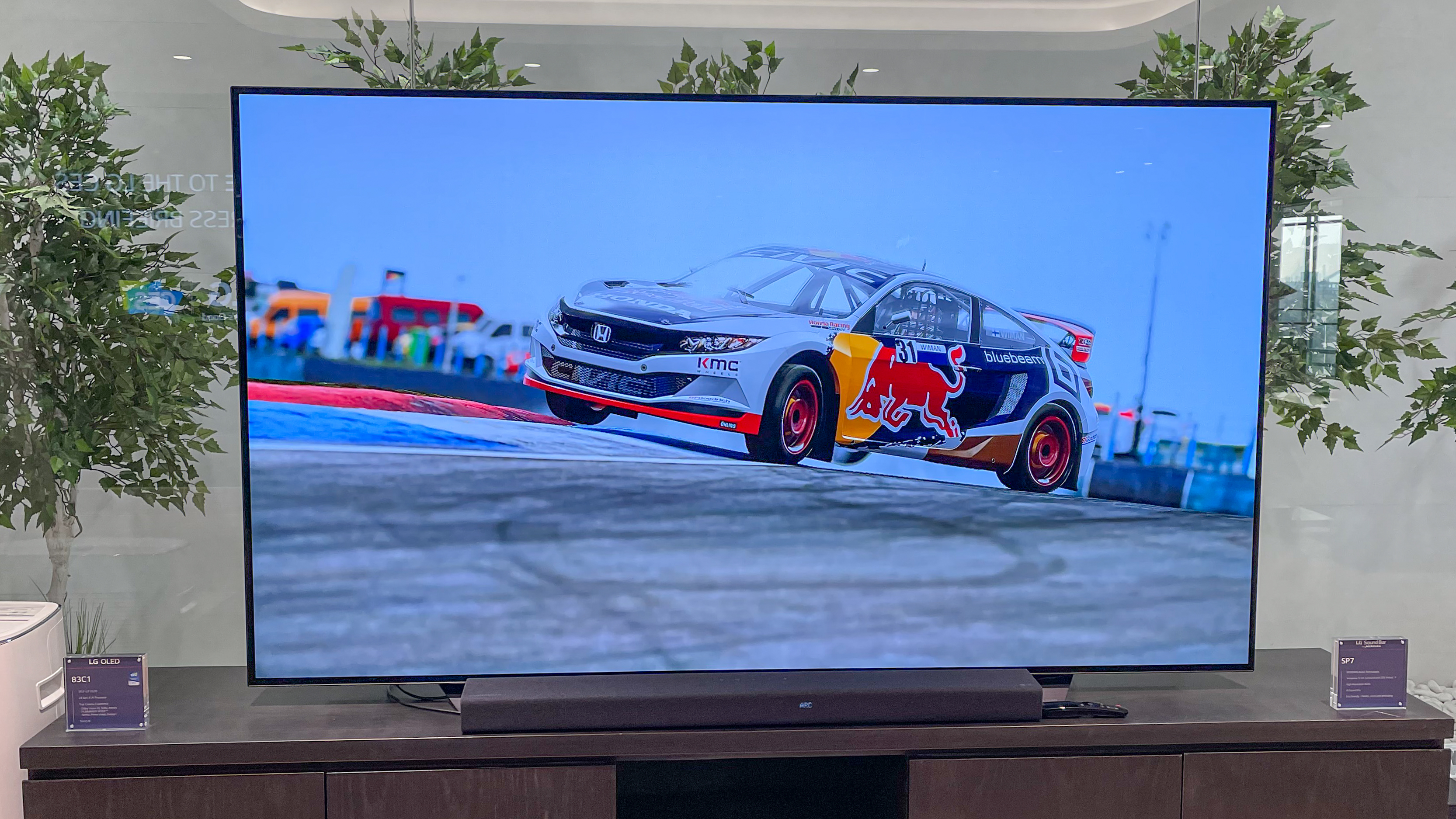

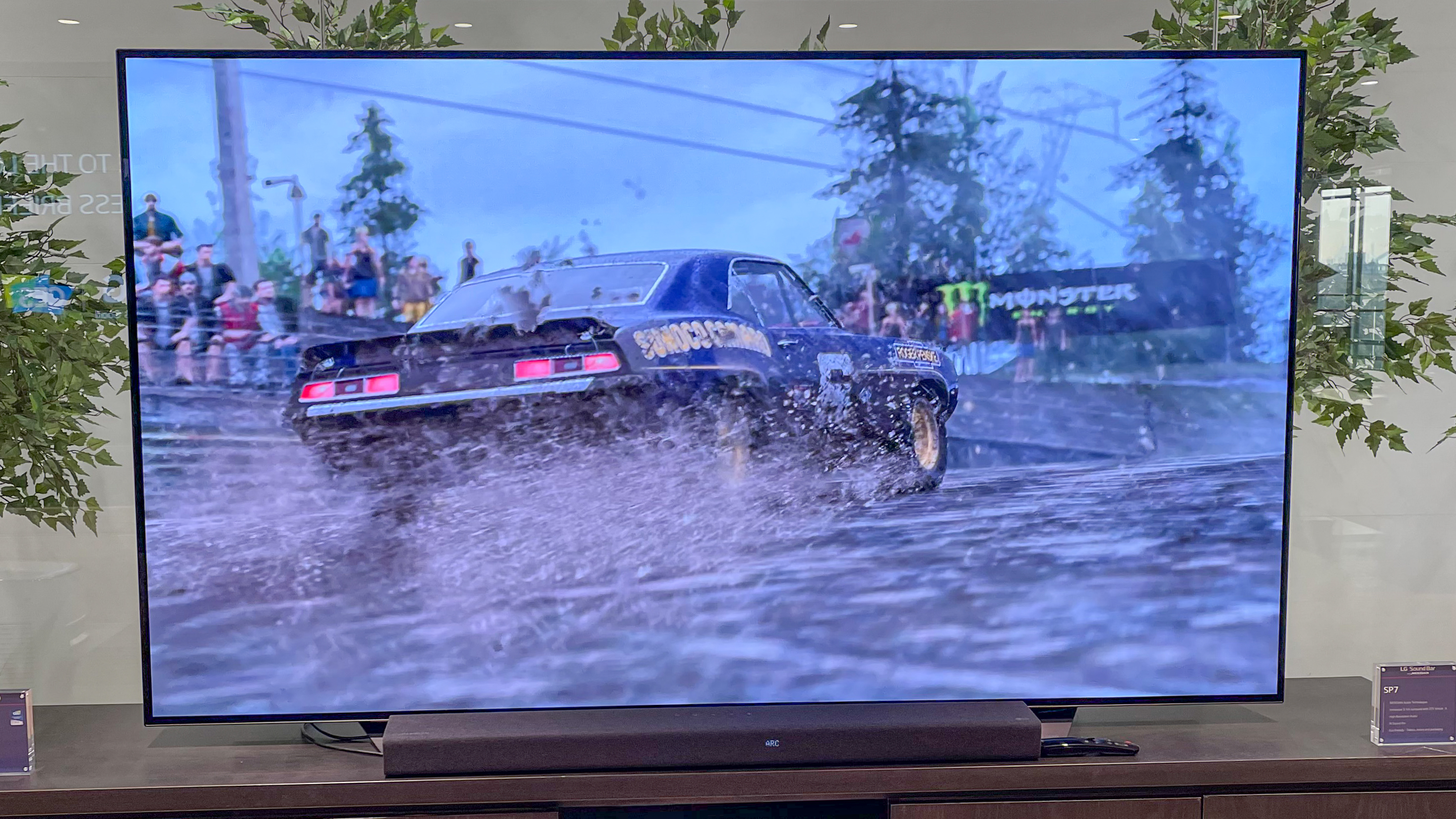

Because the pixels themselves are self-emissive, there’s little to no light bleed and objects moving across the screen look cleaner than on LED-LCD TVs. There’s still a bit of motion blur, but LG’s motion processing has seen a real improvement in the last few years.
In fact, the only area that could stand to be improved in terms of picture quality is the way the Alpha a9 Gen 4 processor handles faces – leaving a bit of a reddish hue and graininess. Watching shows like The Grand Tour on Amazon Prime, you’ll see a dash of redness in the hosts’ faces while faces on characters in HD content upscaled to 4K can have some noticeable grain. LG is aware of that fact, clearly, as that’s a major focus for the Alpha a9 Gen 4 processor, but there’s still a little more work to be done in that area.
Thankfully, the processor does an excellent job at upscaling. Films from the mid-2000s look like they were shot and distributed in 4K despite being streamed in HD, as does content from an HD OTA antenna – which is a real feat of engineering.
Speaking of engineering, it’s definitely worth talking about the new gaming features on this year’s C-Series OLED as that’s where the majority of the innovation is this year. For starters, there’s that new Game Optimiser setting that allows you to quickly adjust the White Stabilizer, Black Stabilizer and VRR. You’ve also got support for ALLM when the OLED detects an incoming game signal through any one of the four HDMI 2.1 ports and a Prevent Input Delay feature that drops input latency to sub-10ms.

Of course, not every game is going to play at 4K/120Hz right now – few even play at 1440p/120Hz or 1080p/120Hz – but you’ll appreciate those that do. Forza Horizon 4 is among the chosen few, though, and it looks incredible on the C1 OLED. Taking cars out on the backcountry roads feels slick and responsive without compromising on visual fidelity.
Long story short, if you’re a gamer-turned-cinephile or vice versa, the LG C1 OLED is competent enough to please both camps in the visual department and is well worth the upgrade from an LED-LCD TV.
Last but not least, it’s worth noting that the LG C1 is totally customizable and great for calibration. If you’re someone who loves tweaking picture settings, the C1 has deep customization options for white point balancing and individual color calibration. If that sounds too challenging, however, we found the default Calibrated settings with a neutral color tone instead of warm really makes the TV look great.
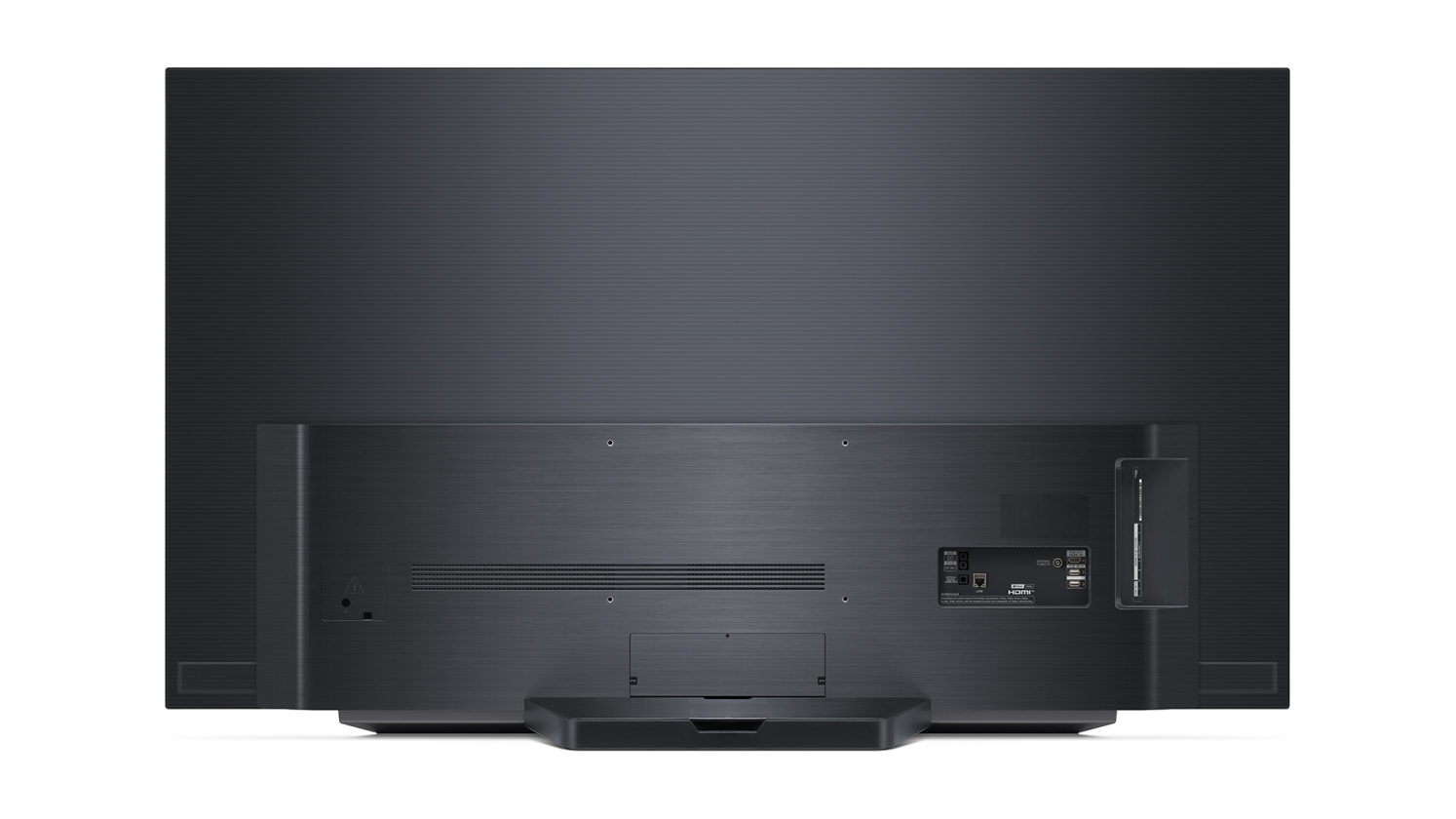
LG C1 OLED: audio performance
- 40W of Dolby Atmos audio
- 2.2-channel system
- Dialogue can get lost in the mix
- Dolby Atmos passthrough with eARC
Picture enhancements aren’t the only tricks up the LG C1 OLED’s sleeve this year – it’s also got a pretty neat AI Sound upscaling feature that transforms basic stereo audio tracks into virtual 5.1.2 Dolby Atmos sound with a fair amount of verticality and that makes the LG C1 OLED sounds a heck of a lot better than your standard TV speakers.
Admittedly, it’s not quite better than a standalone soundbar – especially if you pit it against one of the best soundbars like the Sonos Arc – but out-of-the-box sound should be more than adequate for most people.
The only real issue we noticed is that, if you don’t have sound leveling turned on, audio can be a bit all over the place – meaning you’ll hear booming bass and nearly sibilant highs with weaker dialogue when watching that big new Hollywood blockbuster. For us, it happened during Falcon and The Winter Soldier where the sound effects were fantastic but the actual actors’ voices were getting lost in the mix.
Thankfully, if you notice the same issue, you can tweak that by either setting the default sound profile to Enhanced Dialogue or turn on volume leveling. Both might mean forgoing some of the booming bass, but the result is a more balanced sound that’s easier to listen to for extended periods of time.
However, if you are a soundbar owner or will become one in the near future, the LG C1 supports ARC and eARC through one of the four HDMI ports. That will allow you to pass Dolby Atmos sound from the TV to the soundbar and use a single remote to control the volume. It’s extremely convenient, and worth taking advantage of if you don’t already.
Should you buy the LG C1 OLED?

Buy it if…
You want one of the best TVs of 2021
While there are more expensive options out there with a higher peak brightness, the LG C1 is that perfect balance between price and performance. You’re getting 99% of the performance of the top-tier TVs without cleaning out your bank account. It’s more expensive than some budget models, true, but its moderately expensive price tag is well worth it.
You want an easy, simple-to-use smart platform
Having tried every major smart TV platform out there, we can genuinely say that WebOS is one of the best out there. It’s fast and robust with nearly every major service present and accounted for, plus it’s deeply customizable and works with both major smart assistants.
You’re a gamer with next-gen consoles
With four HDMI 2.1 ports that support 4K at 120Hz, this is the TV next-gen gamers have been waiting for. Tack on Game Optimiser that gives gamers a quick and easy way to turn on VRR and Nvidia G-Sync, and you’ve got a very compelling monitor alternative.
Don’t buy it if…
You can find a great deal on the LG CX OLED
The addition of the new Alpha a9 Gen 4 processor makes the LG C1 a better TV than the LG CX OLED, but not by much. That said, if you can find a great deal on last year’s flagship OLED, we still highly recommend it.
Glare can be an issue for you
While the all-glass front screen is gorgeous, it’s also highly reflective. If you’ve had problems with glare in the past – or know that the TV will be facing a light source head-on – you might want to consider a QLED TV instead.
You want something even brighter
The LG C1 OLED looks brighter than previous years, but it doesn’t use LG’s new OLED evo panels that are engineered from the ground-up for higher peak brightness. If you’ve seen OLEDs in the past and weren’t impressed by their brightness, you might be a good candidate for the LG G1 OLED with the new OLED evo panel instead.
You can see available discounts with our list of the best LG promo codes this month.
First reviewed March 2021.

Nick Pino is Managing Editor, TV and AV for TechRadar's sister site, Tom's Guide. Previously, he was the Senior Editor of Home Entertainment at TechRadar, covering TVs, headphones, speakers, video games, VR and streaming devices. He's also written for GamesRadar+, Official Xbox Magazine, PC Gamer and other outlets over the last decade, and he has a degree in computer science he's not using if anyone wants it.
